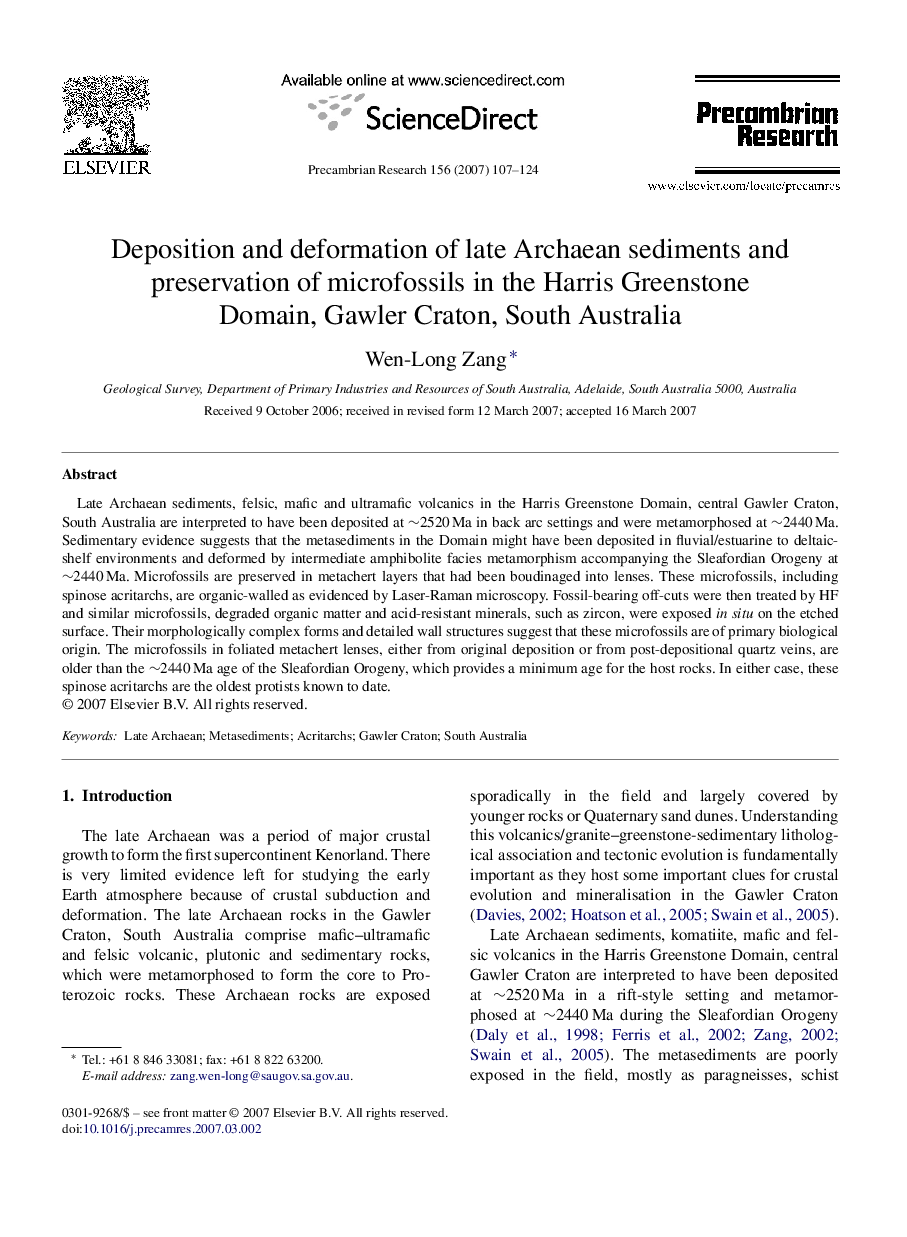| Article ID | Journal | Published Year | Pages | File Type |
|---|---|---|---|---|
| 4724425 | Precambrian Research | 2007 | 18 Pages |
Late Archaean sediments, felsic, mafic and ultramafic volcanics in the Harris Greenstone Domain, central Gawler Craton, South Australia are interpreted to have been deposited at ∼2520 Ma in back arc settings and were metamorphosed at ∼2440 Ma. Sedimentary evidence suggests that the metasediments in the Domain might have been deposited in fluvial/estuarine to deltaic-shelf environments and deformed by intermediate amphibolite facies metamorphism accompanying the Sleafordian Orogeny at ∼2440 Ma. Microfossils are preserved in metachert layers that had been boudinaged into lenses. These microfossils, including spinose acritarchs, are organic-walled as evidenced by Laser-Raman microscopy. Fossil-bearing off-cuts were then treated by HF and similar microfossils, degraded organic matter and acid-resistant minerals, such as zircon, were exposed in situ on the etched surface. Their morphologically complex forms and detailed wall structures suggest that these microfossils are of primary biological origin. The microfossils in foliated metachert lenses, either from original deposition or from post-depositional quartz veins, are older than the ∼2440 Ma age of the Sleafordian Orogeny, which provides a minimum age for the host rocks. In either case, these spinose acritarchs are the oldest protists known to date.
